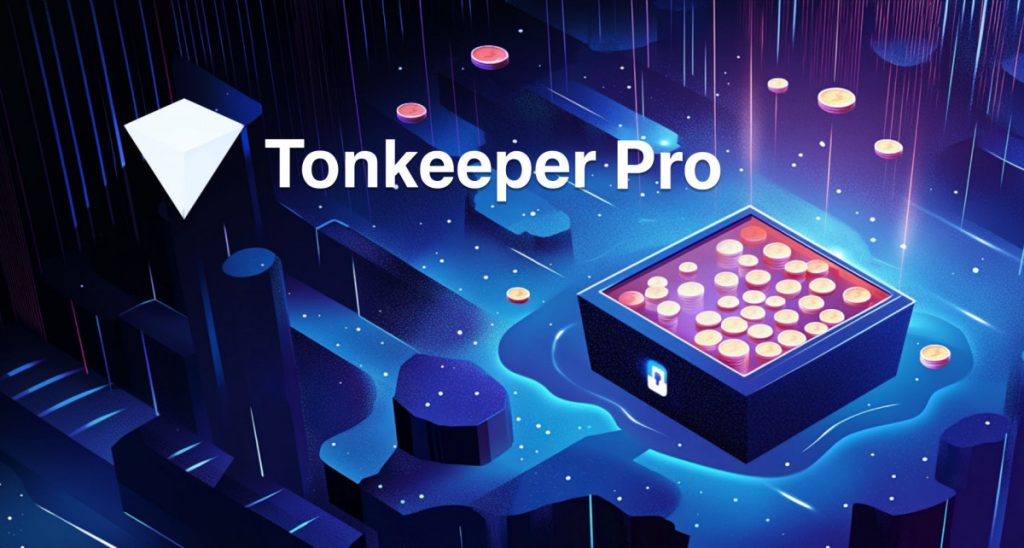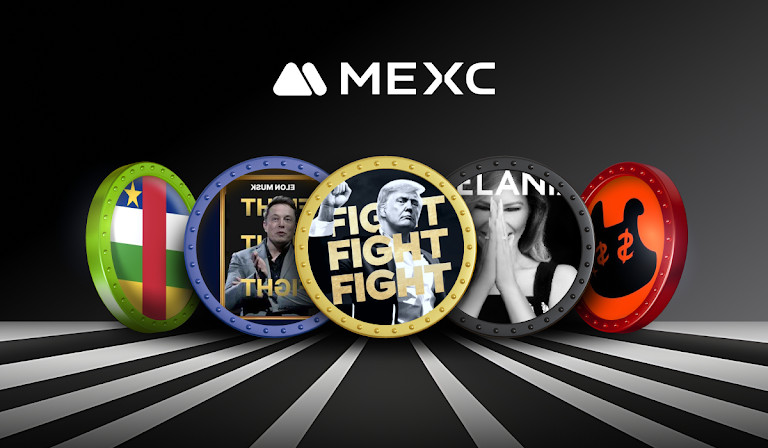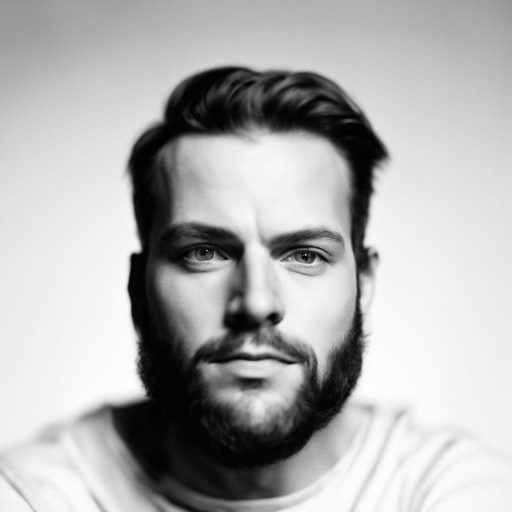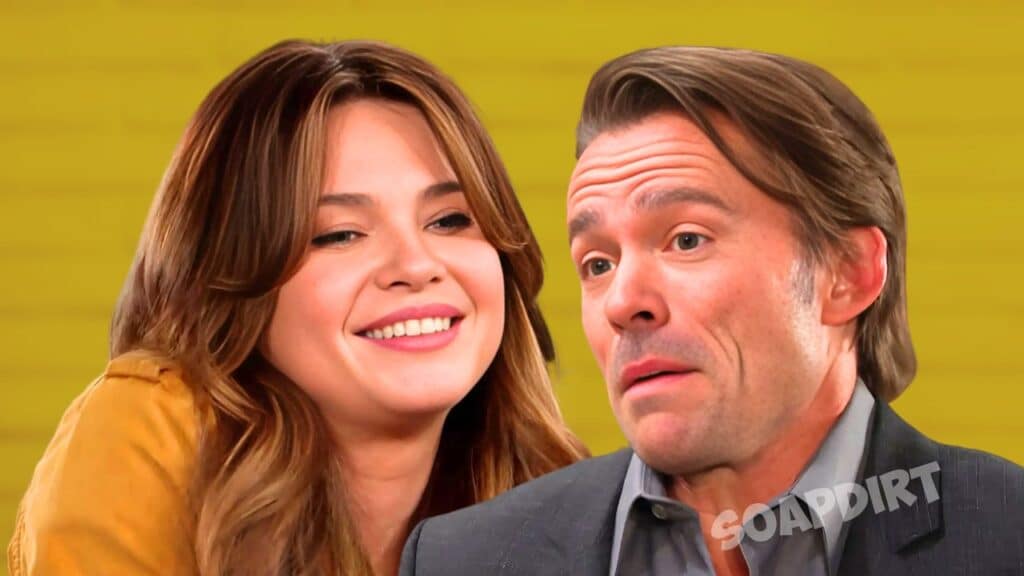With global cloud computing spending projected to soar to $1.35 trillion by 2027, businesses and individuals increasingly rely on cloud solutions. Within this landscape, cloud GPUs have become a major area of investment, particularly for AI, machine learning, and high-performance computing (HPC).
The demand for GPU as a Service (GPUaaS) has fueled a massive market expansion. Valued at $3.23 billion in 2023, the GPUaaS market is expected to reach $49.84 billion by 2032. AI research, deep learning applications, and high-performance computational workloads drive this growth.
However, is renting cloud GPUs the most cost-effective solution for businesses? Understanding cloud GPUs’ financial implications, use cases, and cost structures is crucial for making informed decisions.
This article explores the economics of renting cloud GPUs, comparing different pricing models, discussing cost-saving strategies, and analyzing real-world scenarios to help you optimize your cloud computing budget.
When Should You Rent a Cloud GPU?
Cloud GPUs provide numerous advantages but are not always the right fit. Before committing to a cloud GPU rental, it’s essential to understand when it makes the most sense. Here are key scenarios where renting a cloud GPU is beneficial:
1. Short-Term Projects and Peak Demand
Project-Based Workloads: Renting is more practical than investing in expensive hardware if your project requires high GPU power for a limited time—such as training AI models, rendering 3D animations, or running simulations. If your GPU usage fluctuates, cloud GPUs can scale up when demand is high and down when resources are no longer needed. This eliminates the inefficiency of idle hardware.
2. Experimentation and Innovation
Testing New Technologies: Cloud GPUs allow businesses and researchers to experiment with different GPU architectures without incurring large upfront costs. This is crucial for AI research, game development, and other exploratory projects. If you are unsure whether an AI or ML model will be viable, renting cloud GPUs allows you to test your ideas before investing in expensive on-premise infrastructure.
3. Accessibility and Collaboration
Democratizing Access to High-Performance GPUs: Not all organizations can afford high-end GPUs. Cloud services provide access to powerful GPU resources for startups, researchers, and developers. With cloud-based GPU computing, team members can work on shared resources, collaborate on machine learning projects, and access data remotely from anywhere.
4. Reduced IT Overhead
No Hardware Maintenance: Cloud providers handle GPU maintenance, software updates, and security patches, allowing your team to focus on core tasks. Cloud GPUs eliminate the need for physical data centers, reducing space, cooling systems, and power consumption costs.
5. Cost-Effectiveness for Specialized Workloads
Tailored GPU Instances: Many providers offer optimized GPU instances for specific workloads, such as deep learning or scientific computing. These options provide better performance at a lower cost than general-purpose GPUs.
By analyzing these factors, businesses can determine whether cloud GPU rental is a strategic choice that aligns with their financial and operational goals.
Understanding the Cost of Renting Cloud GPUs
Renting a cloud GPU is not just about the hourly rental price—other factors influence the total cost of ownership (TCO), including workload requirements, pricing models, storage, and data transfer fees. Let’s examine the key cost components.
On-Demand Instances: Many cloud providers offer pay-as-you-go pricing, which is ideal for short-term projects. For instance, renting an NVIDIA RTX 4090 on Spheron Network (Secure) costs $0.31 / hr. Best for: Users with unpredictable workloads who need flexibility.
Reserved Instances: Reserved instances can save you 40–60% compared to on-demand pricing, if you require GPUs for extended periods. They are best for Long-term AI model training, HPC workflows, and large-scale simulations.
Bare Metal Servers: Bare metal servers provide superior performance without virtualization overhead for applications that require dedicated resources and full control. For example, renting a bare metal server with 8 NVIDIA RTX 4090 (Secure) GPUs costs $2.48 /hr and 8 NVIDIA RTX 6000-ADA (Secure) costs $7.20 /hr on Spheron Network. They are best for Real-time AI inference, large-scale rendering, and performance-sensitive applications.
GPU Clusters: GPU clusters offer high scalability for enterprises conducting parallel processing or large-scale deep learning training. Best for: Distributed AI training and large-scale computational tasks.
2. Pricing by GPU Type
Not all GPUs are priced equally. The cost of renting a GPU depends on its capabilities. High-end models like NVIDIA H200 or H100 cost significantly more than older models like the V100 or A4000. Matching the right GPU to your workload is essential to prevent overpaying for unnecessary performance.
3. Storage and Data Transfer Costs
Beyond GPU rental, cloud providers charge for:
Storage: Storing 1TB of training data can cost $5 per month for standard storage, but SSD options cost more.
Data Transfer Fees: Transferring large datasets between cloud regions can add significant expenses.
4. Hidden Costs to Watch For
Assessing your needs and considering scenarios like the one above can help you make smarter decisions about renting cloud GPUs. Let’s look at a real-world example to understand potential costs and how to save money.
Case Study: Cost Breakdown of AI Model Training
When planning an AI model training project, the first thought that often comes to mind is: “Let’s do it on‑premise!” In this case study, we’ll walk through the cost breakdown of building an on‑premise system for training AI models. We’ll begin by looking at the more cost‑efficient NVIDIA V100 GPUs.
Suppose a company needs to train a deep learning model for computer vision. They require 8x NVIDIA V100 GPUs for 30 days. Here’s how the costs:
On‑Premise Cost Breakdown Using NVIDIA V100 GPUs
Not every training workload requires the absolute highest-end hardware. For many AI inference and moderate training workloads, an on-premise system with 8x NVIDIA V100 GPUs can be a viable choice. Here’s a breakdown of the estimated costs:
ComponentEstimated Price (USD)Notes
8 × NVIDIA V100 GPUs$24,000Approximately $3,000 per GPU (used market)
Compute (CPUs Cost)$30,000High-performance CPUs for parallel processing
1TB SSD Storage$1,200High-end NVMe drives
Motherboard$10,000+Specialized board for multi-GPU configurations
RAM$10,000 – $18,0002TB+ of high-speed DDR5 RAM (can be lower for some workloads)
NVSwitch$10,000+Required for NVLink-enabled V100 clusters (higher bandwidth)
Power Supply$5,000 – $8,000Higher power consumption (~250W per V100)
Cooling$5,000+More aggressive cooling needed compared to V100 (liquid cooling preferred)
Chassis$6,000+Specialized high-density GPU chassis
Networking$2,500+High-bandwidth networking cards (100GbE or faster)
Software & Licensing$6,000+OS, drivers, and specialized AI software
Total Cost Estimate$109,700 – $134,700+Higher than L4-based setups due to increased power and cooling needs
After this high-investment project, the Project can think it can recover the investment. One strategy to recover some of the capital investment for an on‑premise system is to resell the hardware on the aftermarket. However, for AI accelerators, the resale market often only returns a fraction of the original cost. For example, second‑hand NVIDIA GPUs might fetch only 40–60% of their new price, depending on market conditions and the hardware’s condition.
If the resale value isn’t sufficient—if you’re unable to find buyers at your target price—the hardware could end up sitting idle (or “going to dust”), locking away capital and risking obsolescence.
These challenges—high upfront costs, rapid depreciation, and idle hardware risk—drive many organizations toward cloud-based AI compute services. To understand this better, let’s compare the cloud compute platforms costs side by side.
8x NVIDIA V100 GPU Rent Cost Breakdown
ProviderPrice per Hour (1x V100)Price per Hour (8x V100s)Price per DayPrice per Month (30 Days)
Google$4.69$37.52$900.48$27,014.40
Amazon$3.76$30.08$721.92$21,657.60
CoreWeave$1.02$8.16$195.84$5,875.20
RunPod$0.23$1.84$44.16$1,324.80
Spheron$0.10$0.80$19.20$576.00
Spheron Network remains the most affordable option, being 47x cheaper than Google and 37x cheaper than Amazon for V100 compute. Let’s compare another GPU RTX 4090 rent cost.
1 x RTX 4090 GPU Rent Cost Breakdown
Cloud ProviderPrice per HourPrice per DayPrice per Month (720 hrs)
Lambda Labs~$0.85/hr~$20.40~$612.00
RunPod (Secure Cloud)~$0.69/hr~$16.56~$496.80
GPU Mart~$0.57/hr~$13.68~$410.40
Vast.ai Marketplace~$0.37/hr~$8.88~$266.40
Together.ai~$0.37/hr~$8.88~$266.40
RunPod (Community Cloud)~$0.34/hr~$8.16~$244.80
Spheron Network (Secure)~$0.31/hr~$7.44~$223.20
Spheron Network (Community)~$0.19/hr~$4.56~$136.80
Note: Except Spheron Network rates, other platform approximate rates can vary based on configuration (CPU/RAM allocation), region, and pricing model (on‑demand, spot, etc.).
Spheron Network offers the lowest rate at $0.31/hr(Secure) and $0.19/hr(Community), making it between 38.71% and 77.65% cheaper than the other providers in our list, depending on which you compare it to. Unlike traditional cloud providers, Spheron includes all utility costs (electricity, cooling, maintenance) in its hourly rate—no hidden fees.
While Big cloud providers offer more flexibility and eliminate the maintenance burden, they aren’t always the most cost-efficient solution. Cloud computing is generally cheaper than an on-premise setup, but it’s not necessarily the optimal choice for all use cases. That’s why we have built Spheron Network.
Spheron is a Decentralized Programmable Compute Network that simplifies how developers and businesses use computing resources. Many people see it as a tool for both AI and Web3 projects, but there is more to it than that. It brings together different types of hardware in one place, so you do not have to juggle multiple accounts or pricing plans.
Spheron lets you pick from high-end machines that can train large AI models, as well as lower-tier machines that can handle everyday tasks, like testing or proof-of-concept work and deploying SLMs or AI agents. This balanced approach can save time and money, especially for smaller teams that do not need the most expensive GPU every time they run an experiment. Instead of making big claims about market sizes, Spheron focuses on the direct needs of people who want to build smart, efficient, and flexible projects.
As of this writing, the Community GPUs powered by Spheron Fizz Node are below. Unlike traditional cloud providers, Spheron includes all utility costs in its hourly rate—there are no hidden fees or unexpected charges. You see the exact cost you have to pay, ensuring complete transparency and affordability.
Spheron’s GPU marketplace is built by the community, for the community, offering a diverse selection of GPUs optimized for AI training, inference, machine learning, 3D rendering, gaming, and other high-performance workloads. From the powerhouse RTX 4090 for intensive deep learning tasks to the budget-friendly GTX 1650 for entry-level AI experiments, Spheron provides a range of compute options at competitive rates.
By leveraging a decentralized network, Spheron not only lowers costs but also enhances accessibility, allowing individuals and organizations to harness the power of high-end GPUs without the constraints of centralized cloud providers. Whether you’re training large-scale AI models, running Stable Diffusion, or optimizing workloads for inference, Spheron Fizz Node ensures you get the most value for your compute needs.
High-End / Most Powerful & In-Demand GPUs
#GPU ModelPrice per Hour ($)Best for Tasks
1RTX 40900.19AI Inference, Stable Diffusion, LLM Training
2RTX 4080 SUPER0.11AI Inference, Gaming, Video Rendering
3RTX 40800.10AI Inference, Gaming, ML Workloads
4RTX 4070 TI SUPER0.09AI Inference, Image Processing
5RTX 4070 TI0.08AI Inference, Video Editing
6RTX 4070 SUPER0.09ML Training, 3D Rendering
7RTX 40700.07Gaming, AI Inference
8RTX 4060 TI0.07Gaming, ML Experiments
9RTX 40600.07Gaming, Basic AI Tasks
10RTX 40500.06Entry-Level AI, Gaming
Workstation / AI-Focused GPUs
#GPU ModelPrice per Hour ($)Best for Tasks
11RTX 6000 ADA0.90AI Training, LLM Training, HPC
12A400.13AI Training, 3D Rendering, Deep Learning
13L40.12AI Inference, Video Encoding
14P400.09AI Training, ML Workloads
15V100S0.12Deep Learning, Large Model Training
16V1000.10AI Training, Cloud Workloads
High-End Gaming / Enthusiast GPUs
#GPU ModelPrice per Hour ($)Best for Tasks
17RTX 3090 TI0.16AI Training, High-End Gaming
18RTX 30900.15AI Training, 3D Rendering
19RTX 3080 TI0.09AI Inference, Gaming, Rendering
20RTX 30800.08AI Inference, Gaming
21RTX 3070 TI0.08Gaming, AI Inference
22RTX 30700.07Gaming, Basic AI
23RTX 3060 TI0.07Gaming, 3D Rendering
24RTX 30600.06Entry-Level AI, Gaming
25RTX 3050 TI0.06Basic AI, Gaming
26RTX 30500.06Basic AI, Entry-Level Workloads
Older High-End / Mid-Range GPUs
#GPU ModelPrice per Hour ($)Best for Tasks
27RTX 2080 TI0.08Gaming, ML, AI Inference
28RTX 2060 SUPER0.07Gaming, Basic AI Training
29RTX 20600.06Gaming, AI Experiments
30RTX 20500.05Entry-Level AI, Gaming
Entry-Level & Budget GPUs
#GPU ModelPrice per Hour ($)Best for Tasks
31GTX 1660 TI0.07Gaming, ML Workloads
32GTX 1660 SUPER0.07Gaming, ML Workloads
33GTX 1650 TI0.05Basic AI, Gaming
34GTX 16500.04Entry-Level AI, Gaming
Older GPUs with Lower Demand & Power
#GPU ModelPrice per Hour ($)Best for Tasks
35GTX 10800.06Gaming, 3D Rendering
36GTX 1070 TI0.08Gaming, AI Experiments
37GTX 10600.06Gaming, Entry-Level ML
38GTX 1050 TI0.07Entry-Level AI, Gaming
Low-End Workstation GPUs
#GPU ModelPrice per Hour ($)Best for Tasks
39RTX 4000 SFF ADA0.16AI Training, Workstation Tasks
40RTX A40000.09AI Inference, Workstation Workloads
41T10000.06Entry-Level AI, Graphics Workloads
Why Choose Spheron Over Traditional Cloud Providers?
1. Transparent Pricing
Spheron ensures complete cost transparency with all-inclusive rates. You won’t encounter hidden maintenance or utility fees, making it easier to budget your infrastructure expenses. Traditional cloud providers often impose complex billing structures that lead to unexpected costs, but Spheron eliminates that frustration.
2. Simplifying Infrastructure Management
One reason to look at Spheron is that it strips away the complexity of dealing with different providers. If you decide to host a project in the cloud, you often navigate a maze of services, billing structures, and endless documentation. That can slow development and force you to spend energy on system admin work instead of your core product. Spheron reduces that friction. It acts like a single portal where you see your available compute options at a glance. You can filter by cost, power, or any other preference. You can select top-notch hardware for certain tasks and switch to more modest machines to save money. This helps you avoid the waste when you reserve a large machine but only need a fraction of its power.
3. Optimized for AI Workloads
Spheron provides high-performance compute tailored for AI, machine learning, and blockchain applications. The platform offers:
Bare metal servers for intensive workloads.
Community GPUs for large-scale AI model training.
Flexible configurations that let users scale resources as needed.
4. Seamless Deployment
Spheron removes unnecessary barriers to cloud computing. Unlike traditional cloud services that require lengthy signups, KYC processes, and manual approvals, Spheron lets users deploy instantly. Simply configure your environment and start running workloads without delays.
5. Blending AI and Web3 Support
Spheron unifies AI and Web3 by offering a decentralized compute platform that caters to both domains. AI developers can leverage high-performance GPUs for large-scale computations, while Web3 developers benefit from blockchain-integrated infrastructure. This combined approach allows users to run AI models and smart contract-driven applications on a single platform, reducing the need to juggle multiple services.
6. Resource Flexibility
Technology evolves rapidly, and investing in hardware can be risky if it becomes outdated too soon. Spheron mitigates this risk by allowing users to switch to new machines as soon as they become available. Whether you need high-powered GPUs for deep learning or cost-effective compute for routine tasks, Spheron provides a marketplace where you can select the best resources in real-time.
7. Fizz Node: Powering Decentralized Compute at Scale
Fizz Node is a core component of Spheron’s infrastructure, enabling efficient global distribution of compute power. Fizz Node enhances scalability, redundancy, and reliability by aggregating resources from multiple providers. This decentralized model eliminates the inefficiencies of traditional cloud services and ensures uninterrupted access to compute resources.

Current Fizz Node Network Statistics:
10.3K GPUs
767.4K CPU cores
35.2K Mac chips
1.6 PB of RAM
16.92 PB of storage
175 unique regions

These numbers reflect Spheron’s ability to handle high-performance workloads for AI, Web3, and general computing applications globally.
8. Access to a Wide Range of AI Base Models
Spheron offers a curated selection of AI Base models, allowing users to choose the best project fit. Available models include:

All models use BF16 precision, ensuring efficiency and reliability for both small-scale experiments and large-scale computations. The platform presents model details in a clear, intuitive interface, making it easy to compare options and make informed decisions.
9. User-Friendly Deployment Process
Spheron prioritizes ease of use by eliminating technical barriers. The platform’s guided setup process includes:
Define your deployment in YAML: Use a standardized format to specify resources clearly.
Obtain test ETH: Secure test ETH via a faucet or bridge to the Spheron Chain for deployment costs.
Explore provider options: Browse available GPUs and regions at provider.spheron.network or fizz.spheron.network.
Launch your deployment: Click “Start Deployment” and monitor logs in real-time.
These steps ensure a smooth experience, whether you’re a beginner setting up your first AI Agent or an experienced developer configuring advanced workloads.

Want to test it out? Just go to the Spheron Awesome repo and https://github.com/spheronFdn/awesome-spheron, which has a collection of ready-to-deploy GPU templates for Spheron.
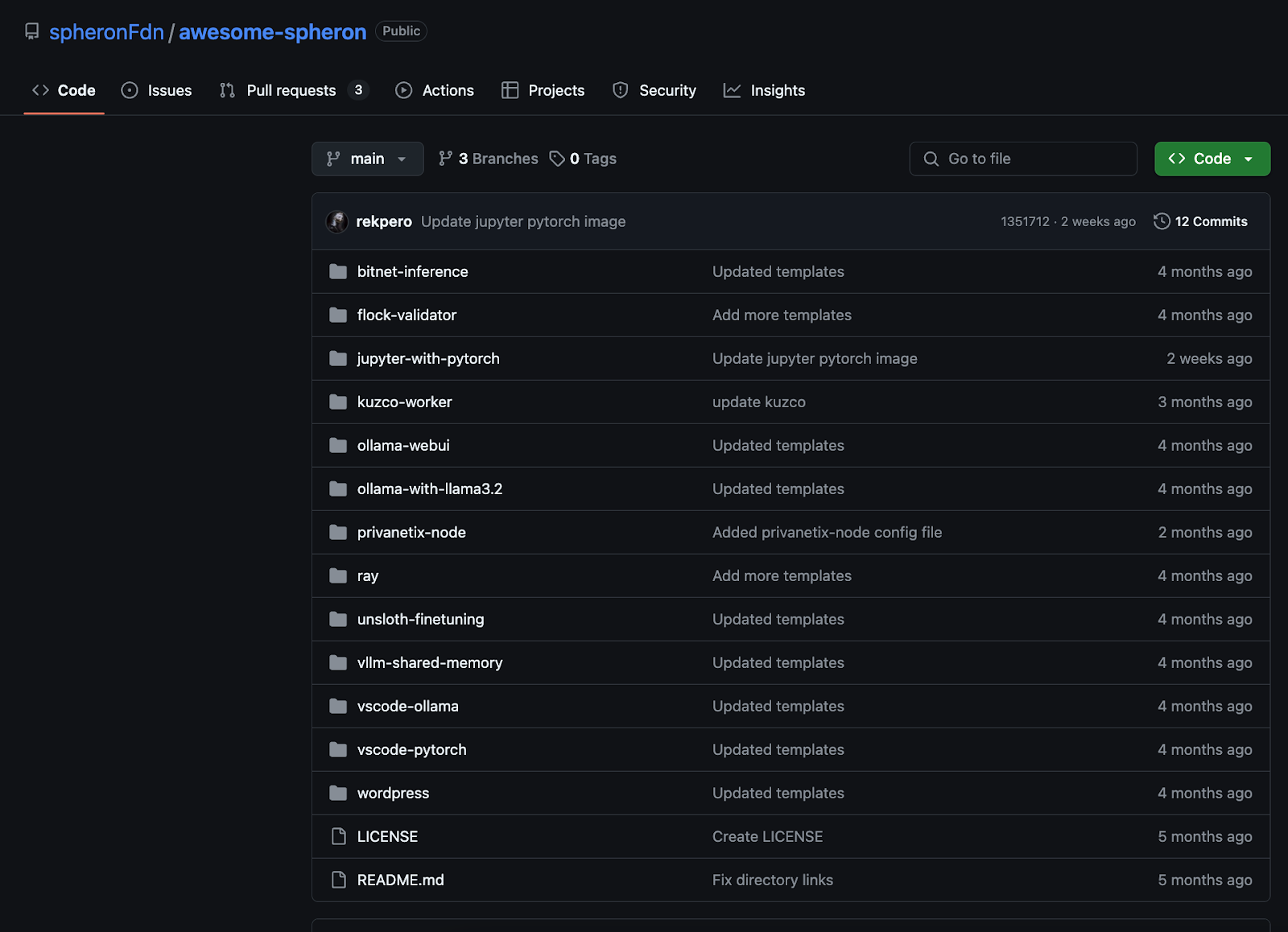
10. The Aggregator Advantage
Spheron operates as an aggregator, pooling resources from multiple providers. This approach enables users to:
Compare GPU types, memory sizes, and performance tiers in real time.
Choose from multiple competing providers, ensuring fair pricing.
Benefit from dynamic pricing, where providers with idle resources lower their rates to attract users.
This competitive marketplace model prevents price monopolization and provides cost-effective computing options that traditional cloud platforms lack.
Conclusion
As you can see, whether you choose on-premise infrastructure or rely on big cloud services, both options come with significant drawbacks. On-premise solutions require massive upfront investments, ongoing maintenance, and scalability challenges, while big cloud providers impose high costs, vendor lock-in, and unpredictable pricing models.
That’s why Spheron Network is the ideal solution. By leveraging decentralized compute, Spheron provides a cost-effective, scalable, and censorship-resistant alternative. With transparent pricing, high availability, and seamless deployment, Spheron empowers developers, businesses, and AI projects to operate with greater autonomy and efficiency. Choose Spheron and take control of your infrastructure today.














